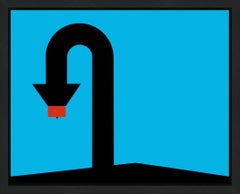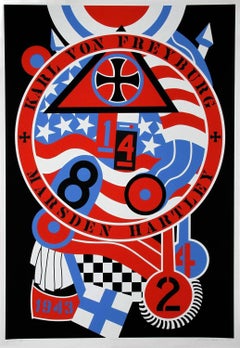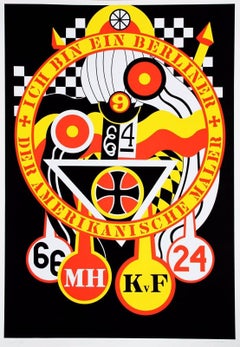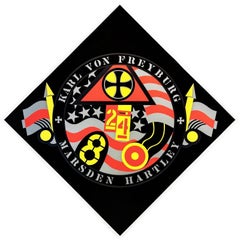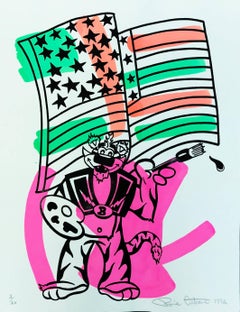Florida - Abstract Prints
1960s Abstract Florida - Abstract Prints
Paper, Lithograph
1970s Modern Florida - Abstract Prints
Lithograph
1990s Pop Art Florida - Abstract Prints
Screen, Paper
1990s Pop Art Florida - Abstract Prints
Screen, Paper
1990s Pop Art Florida - Abstract Prints
Screen, Paper
1990s Pop Art Florida - Abstract Prints
Screen, Paper
1980s Op Art Florida - Abstract Prints
Screen
2010s Minimalist Florida - Abstract Prints
Screen
2010s Abstract Florida - Abstract Prints
Paper, Archival Ink
2010s Abstract Florida - Abstract Prints
Paper, Archival Ink
2010s Abstract Florida - Abstract Prints
Paper, Archival Ink
2010s Abstract Florida - Abstract Prints
Paper, Archival Ink
2010s Abstract Florida - Abstract Prints
Paper, Archival Ink
2010s Abstract Florida - Abstract Prints
Paper, Archival Ink
2010s Abstract Florida - Abstract Prints
Paper, Archival Ink
2010s Abstract Florida - Abstract Prints
Paper, Archival Ink
1970s Op Art Florida - Abstract Prints
Mixed Media
1960s Op Art Florida - Abstract Prints
Screen
1980s Op Art Florida - Abstract Prints
Screen
21st Century and Contemporary Street Art Florida - Abstract Prints
Archival Pigment
1970s Modern Florida - Abstract Prints
Lithograph
1980s Op Art Florida - Abstract Prints
Screen
1980s Abstract Geometric Florida - Abstract Prints
Screen
1980s Op Art Florida - Abstract Prints
Screen
1970s Op Art Florida - Abstract Prints
Screen
2010s Abstract Florida - Abstract Prints
Digital Pigment
1980s Op Art Florida - Abstract Prints
Color
1990s Abstract Florida - Abstract Prints
Paper, Screen
1990s Abstract Florida - Abstract Prints
Paper, Screen
1990s Abstract Florida - Abstract Prints
Paper, Screen
1990s Pop Art Florida - Abstract Prints
Screen, Paper
1980s Abstract Geometric Florida - Abstract Prints
Etching
2010s Contemporary Florida - Abstract Prints
Plexiglass, Archival Pigment
2010s Contemporary Florida - Abstract Prints
Plexiglass, Archival Pigment
2010s Pop Art Florida - Abstract Prints
Mixed Media, Acrylic
2010s Pop Art Florida - Abstract Prints
Mixed Media, Acrylic
2010s Pop Art Florida - Abstract Prints
Mixed Media, Acrylic
2010s Pop Art Florida - Abstract Prints
Mixed Media, Acrylic
2010s Pop Art Florida - Abstract Prints
Mixed Media, Acrylic
2010s Pop Art Florida - Abstract Prints
Mixed Media, Acrylic
2010s Pop Art Florida - Abstract Prints
Mixed Media, Acrylic
2010s Pop Art Florida - Abstract Prints
Mixed Media, Acrylic
2010s Pop Art Florida - Abstract Prints
Mixed Media, Acrylic
2010s Pop Art Florida - Abstract Prints
Mixed Media, Acrylic
2010s Pop Art Florida - Abstract Prints
Mixed Media, Acrylic
2010s Pop Art Florida - Abstract Prints
Mixed Media, Acrylic
2010s Pop Art Florida - Abstract Prints
Mixed Media, Acrylic
2010s Pop Art Florida - Abstract Prints
Mixed Media, Acrylic
2010s Pop Art Florida - Abstract Prints
Mixed Media, Acrylic
2010s Pop Art Florida - Abstract Prints
Mixed Media, Acrylic
2010s Pop Art Florida - Abstract Prints
Mixed Media, Acrylic
2010s Pop Art Florida - Abstract Prints
Mixed Media, Acrylic
2010s Pop Art Florida - Abstract Prints
Mixed Media, Acrylic
2010s Pop Art Florida - Abstract Prints
Mixed Media, Acrylic
2010s Pop Art Florida - Abstract Prints
Mixed Media, Acrylic
2010s Pop Art Florida - Abstract Prints
Mixed Media, Acrylic
2010s Pop Art Florida - Abstract Prints
Mixed Media, Acrylic
2010s Pop Art Florida - Abstract Prints
Mixed Media, Acrylic
2010s Pop Art Florida - Abstract Prints
Mixed Media, Acrylic
2010s Pop Art Florida - Abstract Prints
Mixed Media, Acrylic
Read More
Joan Mitchell’s Rare, Late-Career Diptych Buzzes with Life
Beneath the inky blackness, the painter’s irrepressible energy electrifies this pair of intaglio prints.
The 1stDibs Guide to Types of Abstract Art
Get to know the key movements and artists who have influenced visual culture for more than a century.
Get to Know the Artists Who Led the Op Art Movement
In the 1960s and '70s, the hypnotic creations of Op artists went mainstream and influenced the look of pop culture.
